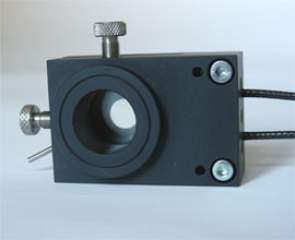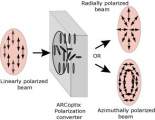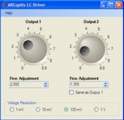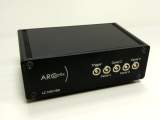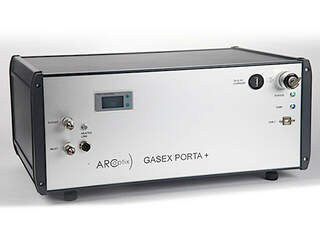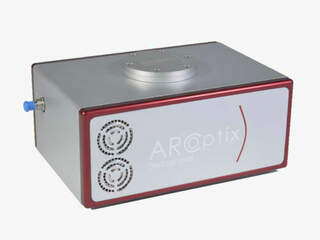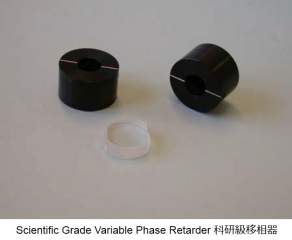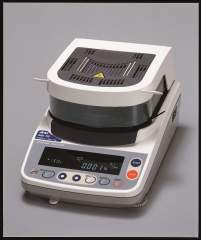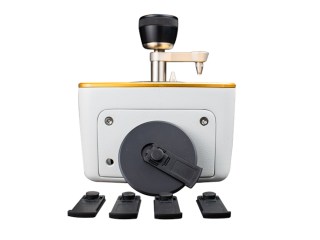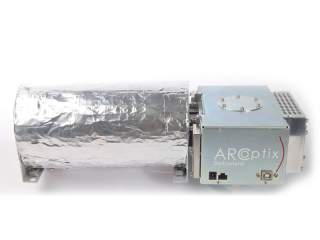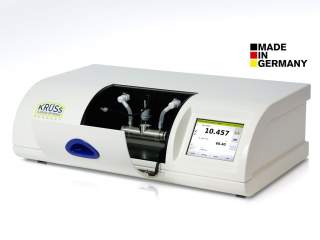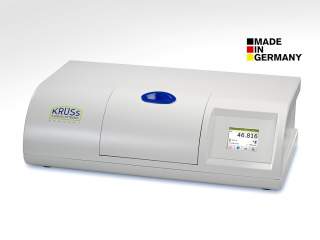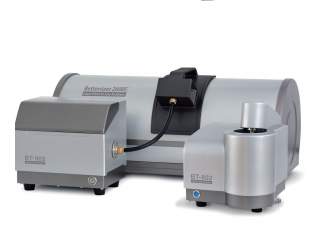SKU:
RPOL
MPN:
RPOL
GTIN:
RPOL
Stock Status:
On The Way
Description
The Radial Polarization converter from Arcoptix is a worldwide unique device that converts a conventional linearly polarized beam into a beam that has a CONTINUOUS radial or azimuthal polarization distribution and stable in time. As illustrated in the figure below the orientation of the polarization vector varies spatially but locally the polarization sate is considered as linear.
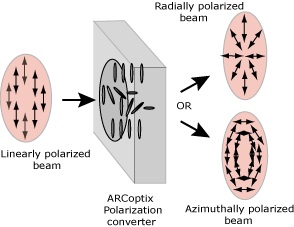
Thanks to special alignment of the liquid crystal molecules, the polarization converter rotates locally the orientation of the linearly polarized beam. Depending of the orientation of the device in respect to the entrance polarization we may obtain either azimuthally or a radially polarization distribution as described in the figure above.
The polarization rotator can be delivered with adequate polarizers and housing (figure below). The specially designed housing permits to align our polarization converter precisely with the rest of your optical system.
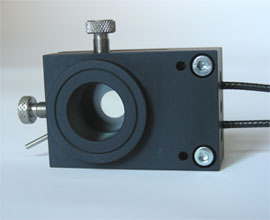
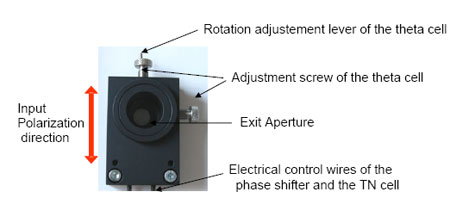
Generation of Laguerre-Gaussian beam (LG beam or douhnut beam)
With the help of the Arcoptix polarization converter LG beams and also Bessel-Gauss beam can relatively easily be generated from any laser in the VIS-NIR region (including also pulsed lasers)
By simply focalizing (here NA 0.9) an azimuthal collimated laser beam that has passed trough the polarization converter we obtain a typically doughnut beam as shown on the left figure here below. With the help of a linear polarizer parallel to x and y axis we obtain respectively the the two-half-lobes spots corresponding to x-y polarization components of the same doughnut beam (figures in the center).
By inserting a additional annular slit in the setup, we obtain focused annular azimuthal beam (here with a NA 0.9 objective) generating so a 1st order Bessel-Gauss beam or also called vortex beams (figure on the right).

Features
Liquid crystal based converter
Worldwide unique device which polarizes the linear beam into radial or azimuthal beam
LG beams or Bessel-Guass beam can be generated ralatively easier
Applications
Dougnut focal point (or reduced size focal spot)
For some applications such as confocal microscopy for example one is interested to produce a doughnut shaped focal point at the front focal plane of a high NA objective. Rigorous electromagnetic calculations shows that doughnut shaped focal points can be obtained by focusing beams having a radial polarization distribution. This may lead to interesting applications in the field of fluorescence microscopy.
Polarization axis finder (PAF)
When a polarization converter is used in combination with a polarizer, a device results that can be used as polarization axis finder (PAF). Watching the PAF a dark segment appears when the entrance polarization is linear. The orientation of the dark segment gives the direction of the polarization.
Inspection of birefringent materials
When placing a brefrigent material between two PAFS (two polarizers with two polarization converter), one can analyze the birefringent properties of the sample in one glimpse (characteristic interference colors and main axis). Neither the sample nor the polarizers have to be rotated.
Optical trapping
A Doughnut shaped focal point created by focusing a radial polarized beam may increase the traping force. Also it may enable trapping particles with lower refractive index than its surrounding fluid.
Laser cutting
The polarization direction of a laser beam when cutting materials is an important parameter. The cutting speed using p-polarized light is more then twice as fast compared to using s-polarized light. Most cutting machines are therefore releasing circular polarized light which results in an average cutting speed and in cutting direction independence. Radially polarized light may eventually increase cutting speed compared to circular polarized light...In principle the polarization converter can withstand high intensities (500W/cm^2).
Inspection of the polarization of the sky
The blue sky light due to scattering of sun light in the atmosphere is partially polarized and therefore be visualized with a PAF. Combined with a compass a sun dial could be built which indicates the local time.
Order Information
-
RADPOL1 Polarization converter
a. RADPOL1-NH: no housing (cell only)
b. RADPAL1-WH: with dedicated housing with x-y positioning system -
RADPOL2 Polarization converter + Phase compensator, no housing
- RADPOL3 Polarization converter + Phase compensator* mounted inside an special dedicated aluminum eloxed housing with x-y positioning system
- RADPOL4 Polarization converter + Phase compensator*+ Twisted
-
Optional Accessories:
a. Nematic (TN) liquid crystal cell** all mounted inside an aluminum eloxed housing with x-y positioning system
b. Extra USB LC driver for driving precisely the TN Cell and the phase compensator

USB powered driver
| [Wavelength Range]: | 350-1700 nm |
| [Active Area]: | 10 mm diameter |
| [Transmission]: | better than 75% (in the VIS) |
| [Retarder Material]: | Nematic Liquid-Crystal |
| [Substrates Material]: | Glass bk7 |
| [Local Extinction Ratio]: | ~100 @ 633nm, input Intensity/ouput intensity, when placed between crossed polarizers |
| [Output Intensity Homogenity]: | < 1/100 RMS variation |
| [Temperature Range]: | 15° - 35° |
| [Save Operating Limit]: | 500 W/cm2 CW, 300 mJ/cm2 10 ns, visible, 200 mJ/cm2 10 ns, 1064 nm |
| [Total size of the housing]: | 6 cm x 4 cm x 1.5 cm |


